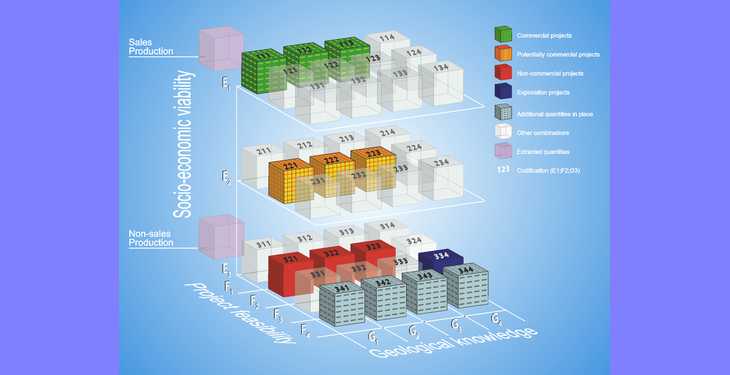For years now, the global energy industry has been having an essential instrument in the description, evaluation and comparison of projects for the capitalization of fossil energy resources: UNFC-2009. Already in use in many countries such as Argentina, Brasil, China, India, Malawi, Niger and the United States, the system built by the UN experts was recently adapted so that it allowed a simple conversion of the labeling in use in the Russian Federation and neighbouring areas.
This is the first time UNFC has been bridged to a national classification system. “It will greatly improve global communication in the oil and gas sector”, UNECE Executive Secretary Christian Friis Bach said. “With fossil fuels representing 80% of primary energy in the UNECE region and 90% in the Russian Federation, we need to have a common understanding of fossil fuel reserves and resources if we want to manage them more sustainably and attain the 2030 Agenda for Sustainable Development.”
The next phase in the cooperation with the Russian Federation on UNFC will involve development of oil and gas case studies to test the Bridging Document.
The term United Nations Framework Classification – essentially a generic numeric labeling of fossil energy reserves on three fundamental criteria: economic and social viability (E), status and feasibility of the project (F), geological knowledge (G).
The success of this approach provides the opportunity to significantly improve energy forecasts at company level and at the country level, while the methodologies used to estimate the magnitude and potential of each resource will be comparable and objective.
How does UNFC-2009 work
Reserves/projects analyzed are scored on each of the three fundamental criteria, which are the axes of a volumetric display system. Each category (E1, F3 etc.) is a constituent unit of the system and receives a fixed definition (e.g. E1 = extraction and sale have been confirmed to be economically viable). The combination of three categories defines a class; for example, class 111 refers to the amounts described in categories E1, F1 and G1.
The UNFC-2009 classification system includes and exceeds previous systems such as PRMS (USA – UK) or CRIRSCO (Russia) through a finer resolution and clearer distinction between classes of energy raw materials described. Currently, UNECE proposal is that the estimated volumes continue to be communicated in specific terms for each type of resource, and simultaneously to use the numeric reporting through the UNFC model. Reporting would remove such ambiguities of terminology and specificities related to each energy sector, with its own history and lingo.
Through “project”, UN experts understand the level/stage in which a decision is made to continue or not (for example, the decision to supplement the investment). The project is the connection between the renewable energy source and volumes of energy products, as such being the basis for the economic evaluation and decision making. All these projects, regardless of the type of resource, have similar characteristics, therefore, the basic principles of UNFC-2009 can be applied:
- the project requires access to storage, accumulation or source
- the project includes a “process” of extraction or conversion to products suitable for sale
- the project requires access to a market
- the project has elements of risk and reward for the investor
- the project has an anticipated production profile (and revenues)
Recently, United Nations Economic Commission for Europe has announced that its Framework Classification for Fossil Energy and Mineral Reserves and Resources was applicable to geothermal energy resources – a theoretical advance that would greatly simplify working procedures and decision-making processes at governmental level (public policy definition) and in the corporate and financial sector (allocation of capital).
energynomics.ro asked Gheorghe Radu, one of the most reputed seniors of the oil and gas industry in Romania, to comment on the UNFC classification relevance: “UNFC Classification is a tool for unitary and efficient analysis, using common terms comparable in feasibility studies to identify bankable projects.
A second type of use is the analysis carried out at national, regional or community level, in order to establish policies to support energy projects. UNFC classification allows a comparative analysis of all types and categories of sources and resources. Thus, one can avoid undue allocations, crossed subsidies and supporting a resource type without being able to compare it with other types of resources.
On the other hand, researches and analyzes allowing the application of UNFC classification for projects of injection/extraction for geological storage of different types of resources are already very advanced.”
